Benvenuto Cellini
Aside from his marriage, Cellini was officially accused or charged with the crime of sodomy once with a woman and at least three times with men, illustrating his bisexual tendencies:[10][11]
- 14 January 1523 he was sentenced to pay 12 staia of flour for relations with a boy named Domenico di ser Giuliano da Ripa.[12]
- While in Paris, a former model and lover brought charges against him of using her “after the Italian fashion.” (i.e. sodomy)[12]
- In Florence in 1548, Cellini was accused by a woman named Margherita, for having certain familiarities with her son, Vincenzo.[13]
- 26 February 1556, his apprentice Fernando di Giovanni di Montepulciano accused his mentor of having sodomised him many times.[14]This time the penalty was a hefty fifty golden scudi fine, and four years of prison, remitted to four years of house arrest thanks to the intercession of the Medicis.[12]
Robert Baden-Powell

Baden-Powell started the scouting movement. He met a young man named Mclaren and fell in love. McLaren first met Baden-Powell (also a 13th Hussars officer) in 1881. Although McLaren was 20 at the time, Baden-Powell nicknamed him “the Boy”, on account of his appearance.[5][6][11][12][13] The two became fast friends, their relationship being one of the most important friendships in Baden-Powell’s life.[3][13][14]
The author TimJeal then examines Baden-Powell’s views on women, his appreciation of the male form, his military relationships, and his marriage, concluding that, in his personal opinion, Baden-Powell was a repressed homosexual.[10] Although it has been romoured, I have yet to see any hard evidence that Baden-Powell was a pedophile.
Hardian
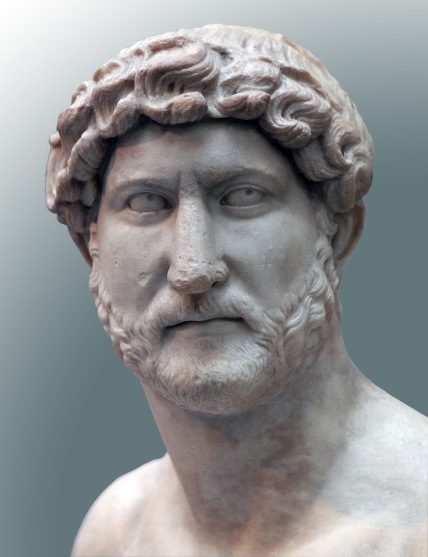
The emperor Hardian had a young boy lover.
“It is possible that Hadrian visited Claudiopolis and there espied the beautiful Antinous, a young boy who was destined to become the emperor’s beloved. Sources say nothing about when Hadrian met Antinous; however, there are depictions of Antinous that show him as a young man of 20 or so. As this was shortly before Antinous’s death in 130 (the earliest date for which we can be sure of Antinous’ being together with Hadrian) Antinous in 123 would most likely have been a youth of 13 or 14.(Anthony Birley, pp. 157–8”
Balthasar Klossowski de Rola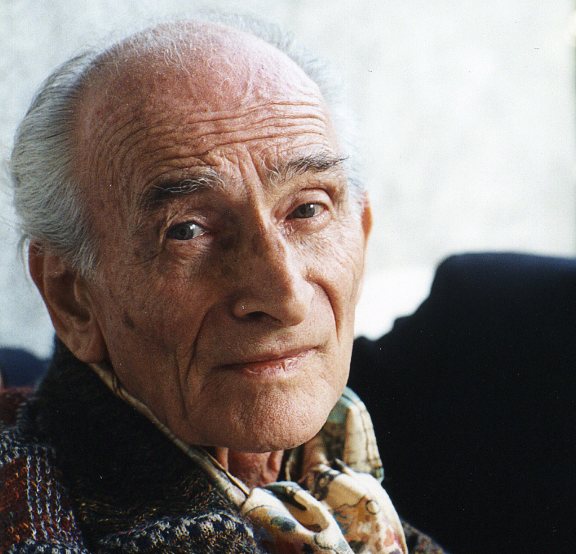
This artist was known as Balthus. One of his exhibitions at the Museum Folkwang in Essen, Germany was shut down over accusations of pedophilia.[13] The German newspaper Die Zeit called the images, which depict a model named Anna from ages eight to 16, “documents of pedophile greed.”
Chuck Berry

In December 1959, Berry was arrested under the Mann Act after questionable allegations that he had sexual intercourse with a 14-year-old Apache waitress, Janice Escalante,[29] whom he had transported over state lines to work as a hat check girl at his club.[30] After an initial two-week trial in March 1960, Berry was convicted, fined $5,000, and sentenced to five years in prison.[31]
Anton Bruckner

Had a very strong interest in young girls. One biographer concluded, “His interest in young girls seems to have been motivated by his fear of sin; he believed that (unlike older women) he could be certain that he was marrying a virgin.” His unsuccessful proposals to teenagers continued when he was past his 70th birthday; one prospect, Berlin hotel chambermaid Ida Buhz, came near to marrying him but broke off the engagement when she refused to convert to Catholicism.[21][22][23]
William Burroughs

His writings often included pedolific elements and he himself admitted to be attracted to young boys. From With William Burroughs: A Report From The Bunker, P62, with him talking to Andy Warhol;
WARHOL: What kind of people do you like?
BURROUGHS: Young boys.
WARHOL: How young do you like them?
BURROUGHS: Oh, say from fourteen to twenty-five.
Hall Caine
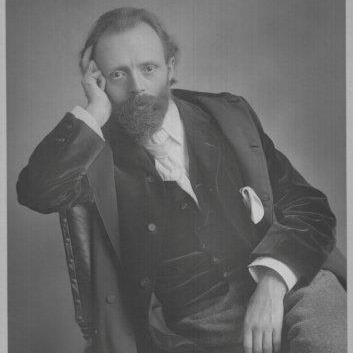
“After Rossetti’s death when he was living in rooms in Clement’s Inn Caine came into contact with a girl named Mary Chandler. Following pressure from her stepfather, Mary came to live with Caine. She was aged 13 (which was at that time the age of consent) while Caine was aged 29. Their friends assumed they were married.[30]”
Roger Casement
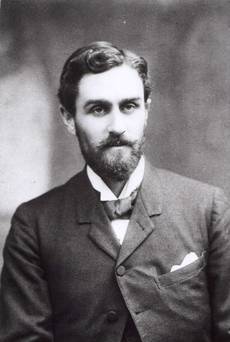
“The Black Diaries are diaries purported to have been written by the Irish revolutionary Roger Casement, which contained accounts of homosexual liaisons with young men. They cover the years 1903, 1910 and 1911 (two) and were handed in to Scotland Yard after his capture in April 1916. Casement was convicted of treason following the Easter Rising. The British government began to circulate photographic page copies, particularly in the US, that showed his “sexual degeneracy”.[1]” Although it is rumored I found no evidence that he was a pedophile.
Charlie Chaplin
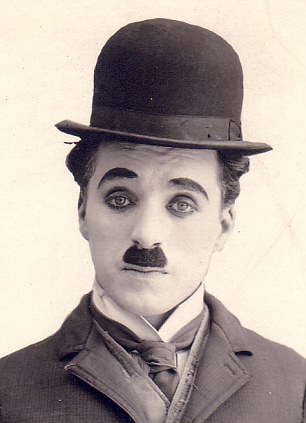
One reason people say Charlie Chaplin was a pedophile was because his next major relationship was with 15-year-old actress Lita Grey, whom he met on the set of The Gold Rush. He allegedly told her: “When the time and place are right, we’re going to make love.” This promise came true only weeks later in the steam room of his Beverly Hills home. The rest of the story was almost a re-run of his previous failed relationship, with the young girl becoming pregnant and demanding marriage only to have Chaplin call her a “little whore.” Lita called him a “human sex machine” who had “abnormal, unnatural, perverted and degenerate sexual desires.” source
Arther C Clark
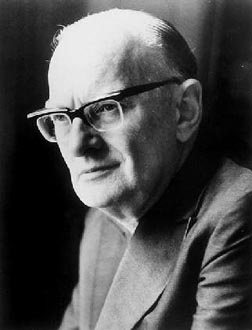
The Sunday Mirror was the first tabloid to make the claim that they recorded an interview with Clarke in which he stated that he had sex with boys at his home in Sri Lanka and that he had no idea how old they where. Clarke was then cleared by the deputy inspector-general of police, MSM Nizam, who said: “We are satisfied that he has not violated any Sri Lankan laws or committed any crime. 1 Eventually the whole story ended up with Interpol critizing The Sunday Mirror for refusing to supply the tape. 2
Ernest Dowson

In 1889, aged 23, Dowson fell in love with the eleven-year-old Adelaide “Missie” Foltinowicz, daughter of a Polish restaurant owner; in 1893 he unsuccessfully proposed to her.[4] His biographer in the Oxford Dictionary of National Biography writes cautiously, “Through [Dowson’s] letters and poetry there runs a strong current of paedophilia, which has an erotic strain; but it is tempered by a humane and romantic appreciation of the freshness and generosity of children not yet tainted by the manners of society.” To Dowson’s despair, Adelaide was eventually to marry a tailor.[5]
Tony Duvert
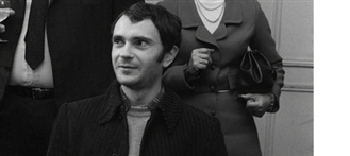
Open pedophile writer. Core themes: the celebration and defence of pedophilia, and criticism of modern child-rearing. In the 1970s attitudes to sexual liberation and child sexuality allowed Duvert to express himself publicly. Here is the plot summary for one of his most famous books, When Jonathan Died:
Jonathan is a 27-year-old artist living in Paris who befriends a single mother and her six-year-old son, Serge. When Serge is eight, his mother asks Jonathan to look after him for a week, which they spend together at Jonathan’s country house in southern France.
Jonathan and Serge become close friends. Jonathan, smitten with the boy, is distraught when Serge returns to Paris. They meet each other again when Serge is age 10, and their sexual relationship continues. While Jonathan and Serge are separated, the sexual side of Jonathan’s desires begins to dominate his behaviour. He eventually seeks out other young boys; he is rejected by some and finds no real satisfaction in sex with the others.
Serge, fatherless and miserable at home with his aloof and demeaning mother, decides to run away to be with Jonathan. He sets off to find him, but becomes overwhelmed by hopelessness, and when confronted with a busy road to cross at night, commitssuicide by throwing himself under a fast-moving car.
Errol Flynn

Flynn live a wild life. His lifestyle caught up with him in 1942 when two under-age girls, Betty Hansen and Peggy Satterlee, accused him of statutory rape[45] Flynn was acquitted.
E.M. Forster
“According to the biography “A Great Unrecorded History: A New Life of E.M. Forster by Wendy Moffat, Picador, 2011.”
For instance, did anyone knew that Forster had been sexually molested as a child? (In March 1891, the 12 year-old Morgan was walking in the woods near Eastbourne and he was approached by a pedophile. The man exposed himself to Morgan and asked him to have a hand job
While homosexual, I found nothing to support the rumor of him being a pedophile.
Paul Guaguin
He took three native brides – aged 13, 14 and 14, for those keeping score – infecting them and countless other local girls with syphilis. 1
A.E. Housman
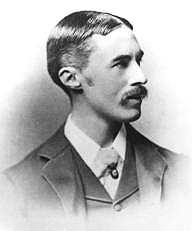
Was a famous poet praising pedophile loves. His poem, “The Shropshire Lad” (1896), was a kind of touchstone for homosexuals during the inter-war period. 1
Howard Hughes
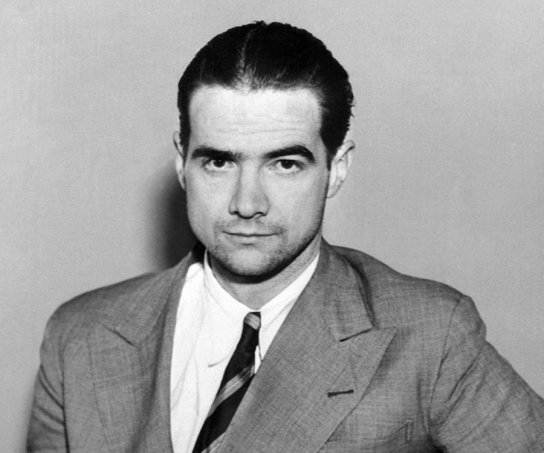
“According to a recent article in the British newspaper The Sun, Howard Hughes had a same sex relationship with rising actor James Dean and on several occasions allowed Dean to sleep with his harem of girls.” Again he was suspected of being a pederast but there seems to be no proof.
Christopher Isherwood
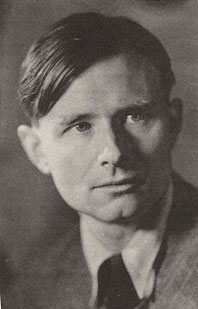
It was only when Isherwood lived abroad after graduating that he fully indulged his taste for pretty youths. He went to Berlin in search of boys and found one called Heinz, who became his first great love. 1
On Valentine’s Day 1953, at the age of 48, he met teenaged Don Bachardy among a group of friends on the beach at Santa Monica. Reports of Bachardy’s age at the time vary, but Bachardy later said, “At the time I was, probably, 16.”[18] In fact, Bachardy was 18. Despite the age difference, this meeting began a partnership that, though interrupted by affairs and separations, continued until the end of Isherwood’s life.[19]
Thomas Jefferson
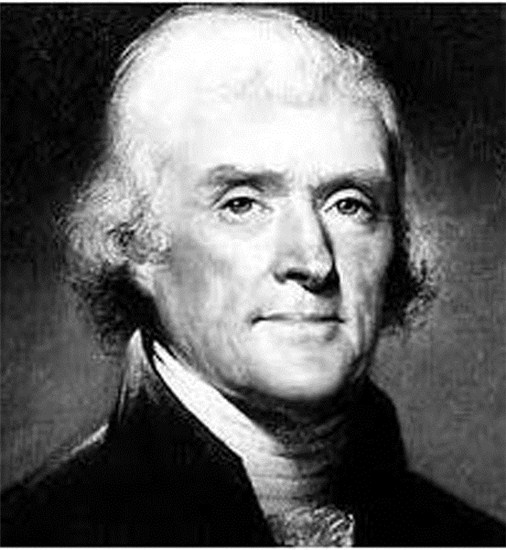
Thomas Jefferson’s affair with slave girl Sally Hemmings still intrigues us over 200 years later.Depending on the account, Sally was described between being 14 and 17 years of age at the beginnings of the affair.
T.E. Lawrence

On his travels he fell in love with a boy. He was a “donkey boy”, a “savage” from the village of Carchemish – a frontier town somewhere between Syria and Turkey. That’s partly why T.E. Lawrence loved Selim “Dahoum” Ahmed (above). The legendary Lawrence of Arabia preferred his Arabs “untouched” uneducated and unspoiled by Western influence. Still, he bought “the dark one” schoolbooks and taught him how to read and write. Lawrence was known for his infatuation with Arabic culture, and like so many who came before and after him, he was compelled to bring a young colored boy back home to dazzle him with European culture. Or was that really it? “He may have believed that it was Dahoum’s mind that interested him, but in fact he was physically attracted to the boy” writes Michael Asher, author of Lawrence: The Uncrowned King of Arabia. That’s what made the 25 year-old Lawrence act inappropriately and move the 14 year-old youth into his home, strip him of his clothing, carve a nude sculpture of him (in the Greco-Roman style, of course) and then proudly place it on the roof of the house. “I take no pleasure in women. I have never thought twice or even once of the shape of a woman: but men’s bodies, in repose or in movement – especially the former – appeal to me directly and very generally.” 1
Jerry Lee Lewis

Jerry Lee Lewis’s music career was almost eradicated when he married Myra Gale Brown, his 13-year-old first cousin. His career stalled for nearly a decade. 1
Edward Lear

Lear’s most fervent and painful friendship involved Franklin Lushington. He met the young barrister in Malta in 1849 and then toured southern Greece with him. Lear developed an undoubtedly homosexual passion for him that Lushington did not reciprocate. Although they remained friends for almost forty years, until Lear’s death, the disparity of their feelings for one another constantly tormented Lear. Indeed, none of Lear’s attempts at male companionship were successful; the very intensity of Lear’s affections seemingly doomed the relationships.[11] The closest he came to marriage was two proposals, both to the same woman 46 years his junior, which were not accepted.
Georg Christoph Lichtenberg

He had many romances. Most of the women were from poor families. In 1777, he met Maria Stechard, then aged 13, who lived with the professor permanently after 1780. She died in 1782.[4] In the following year, he met Margarethe Kellner (1768–1848). He married her in 1789, to give her a pension, as he thought he was to die soon. She gave him six children, and outlived him by 49 years.
Federico García Lorca

(1898-1936) was a Spanish poet and dramatist who was a hebephile, possibly a pedophile as well, or at least someone who wanted lovers younger than himself (21 when he was 36, for example).
The case of Lorca is especially interesting because:He got killed for it. Direct information from some of his young friends has been available.Ph ilip Cummings (see the Wikipedia article on him).The Stanton boy, from Poet in New York . More vaguely on Rafael Rodríguez Rapún and other Spanish lovers.
source (bias warning)
Andrew Marvell

Rumored pedophile but I found nothing that proved this. He tutored a 12 year old girl when he wrote his most famous poems.
COME, little infant, love me now,
While thine unsuspected years
Clear thine agèd father’s brow
From cold jealousy and fears.
Pretty surely ’twere to see
By young Love old Time beguiled,
While our sportings are as free
As the nurse’s with the child.
Common beauties stay fifteen;
Gabriel Matzneff
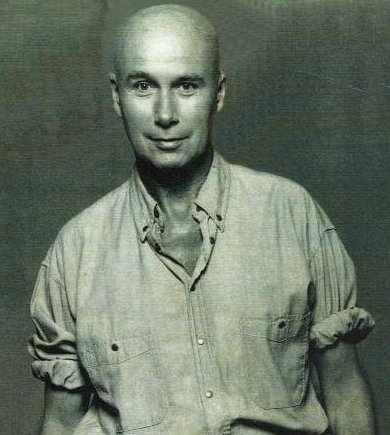
Claimed for himself the qualification of ” pederast “, a “lover of children.” He also denounced the fact that “the erotic charm of the boy” is denied by modern Western society “that rejects homosexual in non-being, kingdom of shadows” . He further adds, “the two most sensual beings I have ever known in my life are a twelve year old boy and a girl of fifteen”
Bernard Montgomery

As early as 1976 – five years after his death – one earlier biographer, Lord Chalfont, noted his “predilection for the company of young men”. Prof Hamilton, who was befriended by the field marshal at age 11 and knew him well for the last 20 years of his life, has no doubt of the nature of Monty’s feelings.
“These were quasi love affairs. He became really passionately involved with these young men – and then, more and more, boys, who he would call ‘my sons’. They were nothing of the kind, of course, but in his own personality he would frame them in this way. I myself have more than 100 very loving letters from him. My relationship with him wasn’t sexual, in the sense that it wasn’t acted upon, but I had been through enough years at British boarding schools to know what kind of enormous affection and feeling he had for me. And I wasn’t alone, this was a consistent pattern in Monty’s life.” One boy was Lucien Treub, Montgomery’s “little Swiss friend”, who met him at 12, and told Hamilton how the general would bathe him personally and rub him down so he would not catch cold. “I’ve interviewed him several times and he was quite clear he didn’t feel there was any molesting going on, but it’s a tricky area,” Prof Hamilton said.
Graham Ovenden
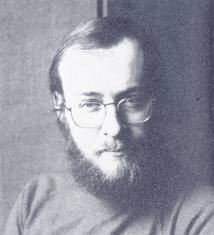
After years of being accused of child pornography for his art, in April 2013, Ovenden was found guilty of six charges of indecency with a child and one charge of indecent assault against a child, charges relating to girls who had modeled for him.
John Peel
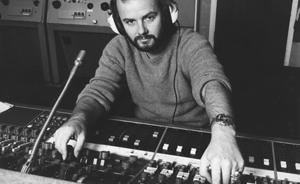
October 2012, Jane Nevin alleged she had had a three-month affair with Peel when she was 15 and he was 30, much of it conducted on BBC premises. She became pregnant aged 16, and had a ‘traumatic abortion’. She said: ‘[Peel] must have known that I was still at school. But he didn’t ask, and I didn’t tell him.’
Marquis de Sade
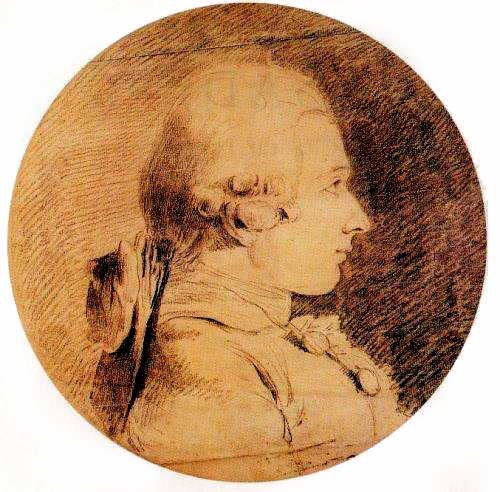
Sade lived a scandalous libertine existence and repeatedly procured young prostitutes as well as employees of both sexes in his castle in Lacoste….He kept a group of young employees at Lacoste, most of whom complained about sexual mistreatment and quickly left his service….Sade was arrested at his publisher’s office and imprisoned without trial; first in the Sainte-Pélagie Prison and, following allegations that he had tried to seduce young fellow prisoners there, in the harsh fortress of Bicêtre….Sade began a sexual relationship with 14-year-old Madeleine LeClerc, daughter of an employee at Charenton. This affair lasted some 4 years, until his death in 1814.
Socrates
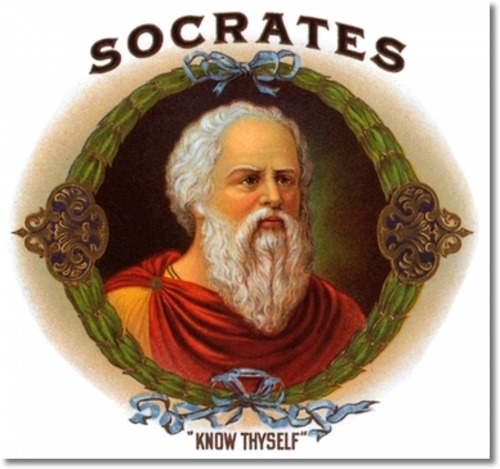
Was attracted to teenage boys, as is evident in this encounter with Charmides in a palaestra.[29]
[Charmides] gave me such a look that I was helpless…and all those in the palaestra gathered around us in a circle, then indeed, my good man, I saw inside his [Charmides’] cloak and I was on fire and no longer in control of myself.
However, there is no evidence that he ever had a homosexual or pederastic relationship.
Josef Stalin
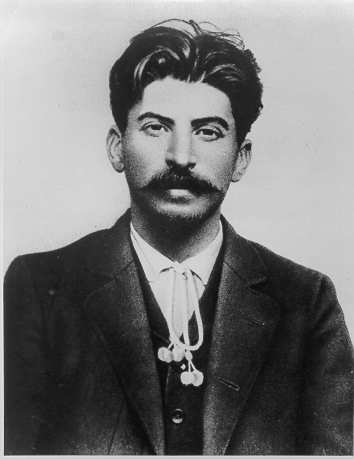
It was claimed that when he was in his 30s and before he became leader, Stalin had raped or seduced, even fathered a child with, a girl who was just 13 years old – and had been indicted for the under-age seduction by the police. 1
Elvis Presley
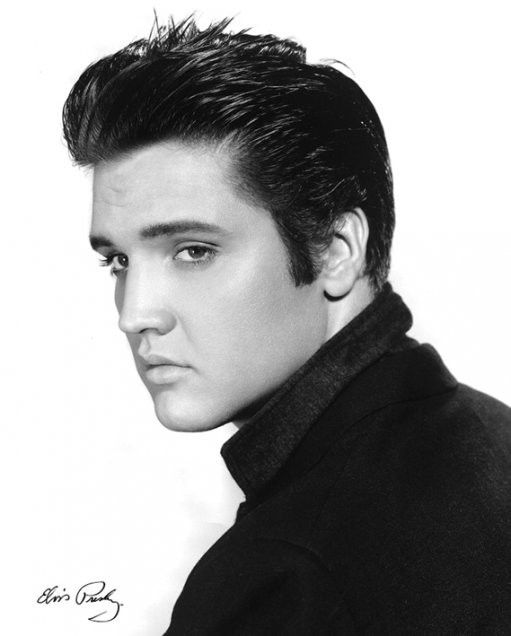
Elvis began dating Priscilla at age 14, and while they allegedly did not consummate the relationship until they were married seven years later, there are numerous (albeit conflicting) reports of his attraction to teenage girls. Some writers have referred to Elvis as a pedophile…
Pierre de Ronsard

He was in love with a 15 year old girl. His Amours de Cassandre with the fifth book of Odes, dedicated to the 15-year-old Cassandre Salviati, whom he had met at Blois and followed to her father’s Château de Talcy.
Plato
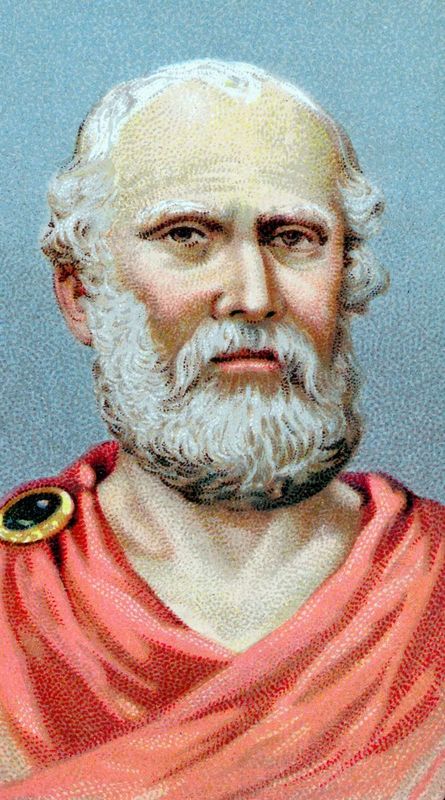
In the Symposium, argues for an army to be comprised of same-sex lovers. In the Laws, Plato applies the idea of a fixed, natural law to sex, and takes a much harsher line than he does in the Symposium or the Phraedrus. In Book One he writes about how opposite-sex sex acts cause pleasure by nature, while same-sex sexuality is “unnatural” (636c). In Book Eight, the Athenian speaker considers how to have legislation banning homosexual acts, masturbation, and illegitimate procreative sex widely accepted. He then states that this law is according to nature (838-839d). Probably the best way of understanding Plato’s discussion here is in the context of his overall concerns with the appetitive part of the soul and how best to control it. Plato clearly sees same-sex passions as especially strong, and hence particularly problematic, although in the Symposium that erotic attraction could be the catalyst for a life of philosophy, rather than base sensuality (Cf. Dover, 1989, 153-170; Nussbaum, 1999, esp. chapter 12). Plato’s writings devalue and finally condemn sexual intercourse with the boys one loved, while valuing the self-disciplined lover who abstained from consummating the relationship.[22]
Anne Sexton
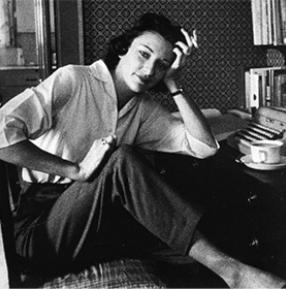
One of the primary themes of her work is incest. Controversy arose with the posthumous public release of the tapes (which had been subject to doctor-patient confidentiality). They are said to reveal Sexton’s inappropriate behavior with her daughter Linda, her physically violent behavior toward both her daughters, and her physical altercations with her husband.[22]
Egon Schiele
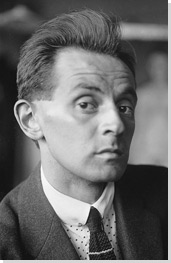
“He and his 17yo lover were driven out of the town by the residents, who strongly disapproved of their lifestyle, including his alleged employment of the town’s teenage girls as models. There is also enough evidence to get him charged, if not convicted, as a pedophile by today’s standards.” source (Note: The writer of that NY Time’s article is obviously ignorant of the fact that sex with a 17yo is not pedophilia but rather ephebophilia)
Karol Szymanoski
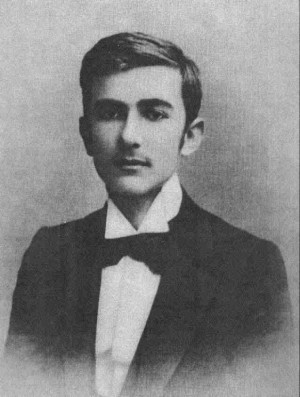
“a wealthy friend and admirer of his invited him twice to visit Sicily. After his return he raved about Sicily, especially Taormina. ‘There,’ he said, ‘I saw a few young men bathing who could be models for Antinous. I couldn’t take my eyes off them.’ Now he was a confirmed homosexual. He told me all this with burning eyes.”[2] In the spring of 1919, Szymanowski met the fifteen-year-old Boris Kochno, an aspiring poet, and fell in love with him. The love was reciprocated and Kochno became clear about his sexual orientation towards men. The relationship was interrupted in 1920 when Szymanowski moved to Warsaw, and Kochno moved to Paris in order to follow a brilliant career as a ballet dancer.
Szymanowski’s feelings towards boys can be also inferred from his novel Ephebos. Written at the time of the October Revolution in Russia, it remains unpublished as the manuscript was burned following the German invasion of Poland. Nevertheless, a 150-page Russian version of the novel’s central chapter “Symposium”, given as a gift of love to Kochno, survived and is now available in a German translation.
Hugh Walpole

The author of the Jeremy stories, once boasted of canoodling with both a father and son at a steam-bath session in Elephant and Castle in London… source
Walt Whitman
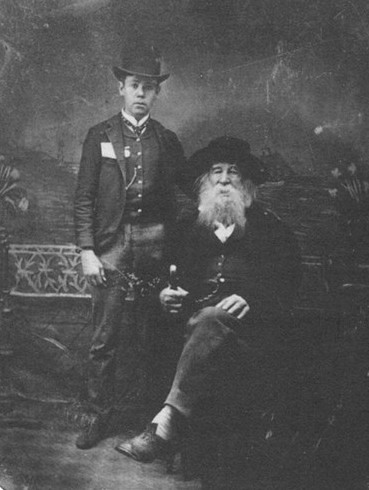
Had intense friendships with many men and boys throughout his life. Some biographers have suggested that he may not have actually engaged in sexual relationships with males,[4]while others cite letters, journal entries, and other sources that they claim as proof of the sexual nature of some of his relationships.[123] …..Another possible lover was Bill Duckett. As a teenager, he lived on the same street in Camden and moved in with Whitman, living with him a number of years and serving him in various roles. Duckett was fifteen when Whitman bought his house at 328 Mickle Street. From at least 1880, Duckett and his grandmother, Lydia Watson, were boarders, subletting space from another family at 334 Mickle Street. Because of this proximity, it is obvious that Duckett and Whitman met as neighbors. Their relationship was close, with the youth sharing Whitman’s money when he had it. Whitman described their friendship as “thick”. Though some biographers describe him as a boarder, others identify him as a lover.[137]
Young boys were also a frequent topic of Whitman’s poetry.
Oscar Wilde
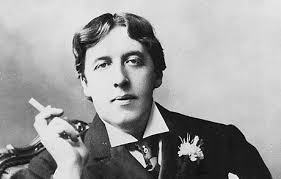
“McKenna’s extensive quotations make quite clear, many were standing up for the righteousness and desirability of sex between men and boys. McKenna exhaustively documents Wilde’s relationships both with young men who were his social equals, and with the teenage working-class boys or “chickens” who were to his taste. One encounter at a hotel in Worthing was with a 15-year-old boy, an event which, if it happened today, would have Wilde castigated as a celebrity pedophile.” source
Jon Savarino Schillaci
Jon Savarino Schillaci (born December 14, 1971) is an American pedophile and a former fugitive who was added to the FBI’s Top Ten Most Wanted Fugitives list on September 7, 2007. Schillaci is the 488th fugitive to be placed on the list. He was captured on June 5, 2008 in San José de Gracia, Michoacán, Mexico after almost nine years on the run.[1] On December 22, 2009 Schillaci was sentenced to 20 to 50 years in prison.[2] He is incarcerated in Northern New Hampshire Correctional Facility and will be eligible for parole in December 2039.[3]
He was the webmaster of BoyChat, under the name “Dylan Thomas” from November 2003 to June 2008, and was a moderator at El Castillo Azul in addition to being a member of the Free Spirits Committee. “Dylan Thomas” also served the community independent of Free Spirits as a talk show host on the Internet boylove radio station Sure Quality Radio.
Sufi Poetry
Sufi is the most important expression of mysticism within Islam. Boylove is central to Sufism. The boy was the most beautiful thing that God ever created, and to contemplate the boy was to meditate on God. “In Sufi poetry the love of boys IS the love of God.” Sufis are also remembered for their dances, in which the swirling of the dance produced an altered state of consciousness. source
Some of the most famous works, both poetry and prose, in Sufi literature are:
- The Mathnawī and Diwan-e Shams-e Tabriz-i of Rūmī
- The Dīwān of Yūnūs by Yunus Emre
- al-Buṣīrī‘s Qaṣīdat-ul-Burda
- Dīwān of Hāfez by Hafiz Shirazi
- Shaikh Abū Sa`īd Abū-l-Khair‘s Asrār-ut-Tawḥīd (“The Secrets of Unity“)
- Farid al-Din Attar‘s The Conference of the Birds
- Ibn Arabi‘s Fuṣūṣ-ul-Ḥikam (“The Bezels of Wisdom”) and Tarjumān al-Ashwāq (“The Interpreter of Desires”)
- Al-Ghazali‘s Kimiya-yi sa’ādat (“The Alchemy of Happiness”)
- Ashraf Jahangir Semnani‘s Lataife Ashrafi
- Muhammad Tahir ul-Qadri‘s Dala’il al-Barakat
- Bahr-ul-Uloom Muhammad Abdul Qadeer Siddiqi Qadri Hasrat‘s “Kulliyyat-e-Hasrat” (Collection of Poetry in devotion to the Prophet and other Sufis).
- Diwan-e-Akhtar by Hazrat Hakim Akhtar (Damat barkatuhum aaliya)
- Tassawwuff by Syed Waheed Ashraf
- Sultan Bahu Punjabi Poetry
- Arif Al-Majdhub The Travels Of HaKohl’in Al-Deen Al-Salik
- al-Fatḥ al-mubīn fī madḥ al-amīn (“Clear Inspiration, on Praise of the Trusted One”) by ʿĀ’ishah bint Yūsuf al-Bāʿūniyyah
Martin Goldberg
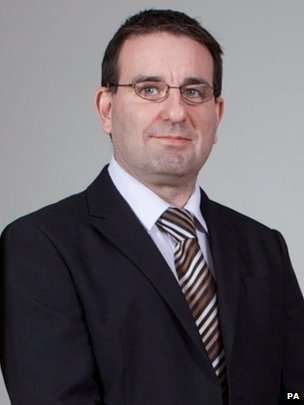
Martin Goldberg, a deputy head mathematics teacher at Thorpe Hall School in Essex, England, United Kingdom, committed suicide in 2014 after being questioned by police during a child pornography investigation. Among the accusations was that he secretly photographed boys in the changing room. Goldberg did not have any pictures of sexual activity, only nudes. He had not yet been charged with any crime.[1][2] Goldberg’s name came to the attention of law enforcement because he had bought material from Azov Films.
John Addington Symonds
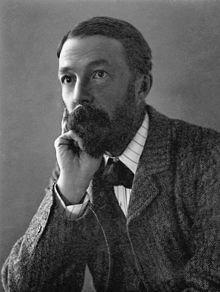
In 1873, Symonds wrote A Problem in Greek Ethics, a work of what would later be called “gay history.” He was inspired by the poetry ofWalt Whitman, with whom he corresponded.[12] The work, “perhaps the most exhaustive eulogy of Greek love,”[13] remained unpublished for a decade, and then was printed at first only in a limited edition for private distribution.[14] Although the Oxford English Dictionary credits the medical writer C.G. Chaddock for introducing “homosexual” into the English language in 1892, Symonds had already used the word inA Problem in Greek Ethics.[15] Aware of the taboo nature of his subject matter, Symonds referred obliquely to pederasty as “that unmentionable custom” in a letter to a prospective reader of the book,[16] but defined “Greek love” in the essay itself as “a passionate and enthusiastic attachment subsisting between man and youth, recognised by society and protected by opinion, which, though it was not free from sensuality, did not degenerate into mere licentiousness.”[17]
Pope Julius III
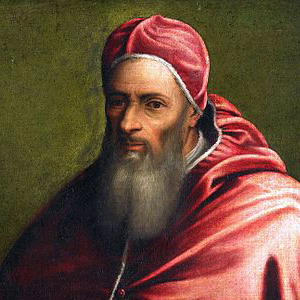
Julius’ papacy was marked by scandals, the most notable of which is centered around the pope’s adoptive nephew, Innocenzo Ciocchi Del Monte. Innocenzo del Monte was a teenaged beggar found in the streets of Parma who was hired by the family as a lowly hall boy in their primary residence,[8] the boy’s age being variously given as 14, 15 or 17 years. After the elevation of Julius to the papacy, Innocenzo Del Monte was adopted into the family by the pope’s brother and by Julius was then promptly created cardinal-nephew. Julius showered his favourite with benefices, including the commendatario of the abbeys of Mont Saint-Michel in Normandy and Saint Zeno in Verona, and, later, of the abbeys of Saint Saba, Miramondo, Grottaferrata and Frascati, among others. As rumours began to circle about the particular relationship between the pope and his adoptive nephew, Julius refused to take advice. The cardinals Reginald Pole and Giovanni Carafa warned the pope of the “evil suppositions to which the elevation of a fatherless young man would give rise”.[9]
Poet Joachim du Bellay, who lived in Rome through this period in the retinue of his relative, Cardinal Jean du Bellay, expressed his scandalized opinion of Julius in two sonnets in his series Les regrets (1558), hating to see, he wrote, “a Ganymede with the red hat on his head”.[10][11] The courtier and poet Girolamo Muzio in a letter of 1550 to Ferrante Gonzaga, governor of Milan, wrote: “They write many bad things about this new pope; that he is vicious, proud, and odd in the head”,[12] and the Pope’s enemies made capital of the scandal, Thomas Beard, in the Theatre of God’s judgement (1597) saying it was Julius’ “custome … to promote none to ecclesisatical livings, save only his buggerers”. In Italy it was said that Julius showed the impatience of a “lover awaiting a mistress” while awaiting Innocenzo’s arrival in Rome and boasted of the boy’s prowess in bed, while the Venetian ambassador reported that Innocenzo Del Monte shared the pope’s bed “as if he [Innocenzo] were his [Julius’] own son or grandson.”[10] “The charitably-disposed told themselves the boy might after all be simply his bastard son.”[8]
Isabel Khan

34 at the time of her 2015 sentencing, was a science teacher in Melbourne, Florida, who had consensual sex with a then-14-year-old male student “several times” over the course of several months during the 2011-2012 school year. She pled guilty to two counts of “lewd or lascivious battery against a child 12 to 16 years of age”. She was sentenced to two years of community control and ten years sex offender probation. This is intended to prevent her from abusing other 12-16-year-old boys, at least during that time period.[1]
Mary Kay Fualaau
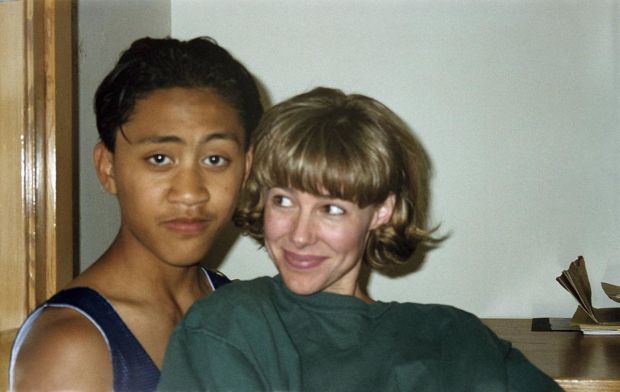
American former schoolteacher who pleaded guilty to two counts of felony second degree rape of a child, her 12-year-old student, Vili Fualaau. Her plea agreement called for six months in jail, with three months suspended, and no contact with Fualaau for life.
One month after her release from jail, she was caught by police with Fualaau. Judge Linda Lau found that she was in violation of the conditions of the plea agreement, vacated it and re-sentenced her to seven years in prison. She was incarcerated from 1998 to 2004.
Before her first arrest, she was impregnated by Fualaau and gave birth to their daughter Audrey while out on bail. She was impregnated by Fualaau a second time shortly after being released from jail in 1998 and gave birth to daughter Georgia while in prison.
After her release in 2004, since he was over 18, Fualaau asked the court for the no-contact order to be revoked, and the court agreed. Letourneau and Fualaau married in 2005, and she took his name.[1][2][3]
Walter H Breen
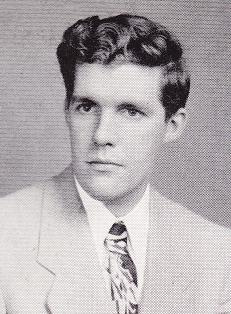
Breen was initially convicted of child molestation or lewd behavior in Atlantic City in 1954, resulting in a probationary sentence.[6][10] During science fiction fandom’s “Breendoggle” of 1963–1964, Breen was banned from attending Pacificon II and briefly blackballed from the subculture’s main amateur press association after allegations of further pedophilic acts surfaced.[10] Nevertheless, many prominent fans of the era (including John Boardman), perhaps unaware of Breen’s prior conviction, dismissed the allegations as hearsay and “character assassination,” and the scandal blew over.[11] Shortly thereafter, Breen married Bradley, who was cognizant of his behavior.[10] A further molestation conviction may have occurred in 1964.[6]
Breen was again arrested on child molestation charges in 1990. He accepted a plea bargain, which resulted in three years’ probation.[12]
A year later, he was charged with eight felony counts of child molestation involving a 13-year-old boy.[12] Though diagnosed with liver cancer in 1992, he was sentenced to 10 years in prison. He died in prison in Chino, California on April 27, 1993.[13]
In 2014, Breen’s daughter Moira Greyland said she was one of the people who reported her father for child molestation.[14]
Edward Brongersma

Beginning with his years at the Criminological Institute, he has written extensively in the area of sexology, especially on pornography, ephebophilia, pedophilia and the age of consent. His books on this subjects include: Das Verfehmte Geschlecht (in German, 1970), Sex en Straf (“Sex and Punishment”, 1972), Over pedofielen en kinderlokkers (“On Pedophiles and Child Molesters”, 1975), and his last work is his magnum opus and entitled Loving Boys (two volumes, 1988–1990).
Brongersma’s work and activism regarding pedophilia focused exclusively on homosexual pedophilia between males[1]
Ralph Nicholas Chubb

Was a British poet, printer, and artist. He was born in Harpenden, Hertfordshire. He attended St Albans School and Selwyn College Cambridge from 1910 to 1913. He later became an officer in the First World War. From 1919 to 1922 Chubb studied at the Slade School of Art in London.
Heavily influenced by Walt Whitman and William Blake, for more than thirty years he created highly elaborate lithographed books promulgating his sexually revolutionary mystical philosophy and highly intricate personal mythology of “Boy God” and “Divine Androgyne”. The memory of a young chorister at St Albans and a brief sexual relationship with another boy when Chubb was 19 served as the basis for this mythology and philosophy.
His books are full of references (in poetry, prose, woodcuttings) to his love and worship of boys. In The book of God’s madness (1928) he declares his love of boys in a long poem, while Water-cherubs (1937) contains a poem in rhyming couplets about boys bathing, as well as an introduction and postscript on boy-love.
Stefan George
George’s pederasty [4] is reflected in works such as Algabal and the love poetry he devoted to a gifted adolescent of his acquaintance named Maximilian Kronberger,[5] whom he called “Maximin”, and whom he identified as a manifestation of the divine. The relevance of George’s sexuality to his poetic work has been discussed by contemporary critics, such as Thomas Karlauf and Marita Keilson-Lauritz.[6]
Maximin came to the attention of Stefan George in Munich in 1903 (according to some sources, in March 1902; others cite 1901 as the date of their original meeting); he died unexpectedly of meningitis the following year, on the day after his 16th birthday. He was “idealized [by George] to the point of proclaiming him a god, following his death… the cult of ‘Maximin’ became an integral part of the George circle’s practice…” [1]
Allen Ginsburg
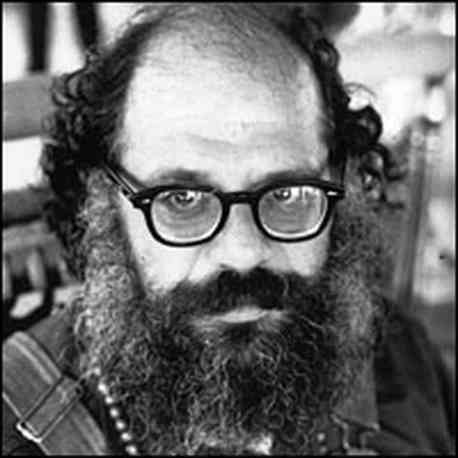
He is argued to be one of the most well-known people to have spoken positively on intergenerational sex, often reflecting on his own experiences as a loved boy and espousing a love for boys himself as an adult. In 1994, Ginsberg rushed to the defense of the North American Man/Boy Love Association when the International Lesbian and Gay Associationattempted to expel decade-old ties to NAMBLA in a political move to gain consultative status in the United Nations. He wrote in NAMBLA Bulletin and said:
- “Attacks on NAMBLA stink of politics, witchhunting for profit, humorlessness, vanity, anger and ignorance […] I’m a member of NAMBLA because I love boys too — everybody does, who has a little humanity.” (citation needed)
Among mainstream enthusiasts of Allen Ginsberg and his poetry, his connection to NAMBLA and romanticism with pederasty are often ignored or denied. Today, most readers of Allen Ginsberg take the position that Ginsberg did not support the objectives of NAMBLA and only defended it as a matter of free speech. Ginsberg himself said that he doesn’t like underage boys in one of his last interviews for the New York Times (1). This sounds, however, as an apology to the decade long attacks on him regarding his connection toNAMBLA. In fact much of his poetry, which was influenced by Walt Whitman reveals that, like Whitman, he loved young men and teenage boys (2). This reputed him as the “poet who loved boys”. As Raymond-Jean Frontain observed:
- “Although both Shumacher and Barry Miles (Ginsberg’s initial biographer) frankly discuss Ginsberg’s sexual politics, neither refers to his involvement with the controversial North American Man/Boy Love Association […] I reread Collected Poems and Ginsberg’s two subsequent collections, surprised by the pattern of references to anal intercourse and to pederasty that emerged”
Wilhelm von Gloeden

Baron Wilhelm von Gloeden (September 16, 1856 – February 16, 1931) was a German photographer who worked mainly in Italy. He is mostly known for his pastoral nude studies of Sicilian boys, which usually featured props such as wreaths or amphorassuggesting a setting in the Greece or Italy of antiquity.
Gaston Goor
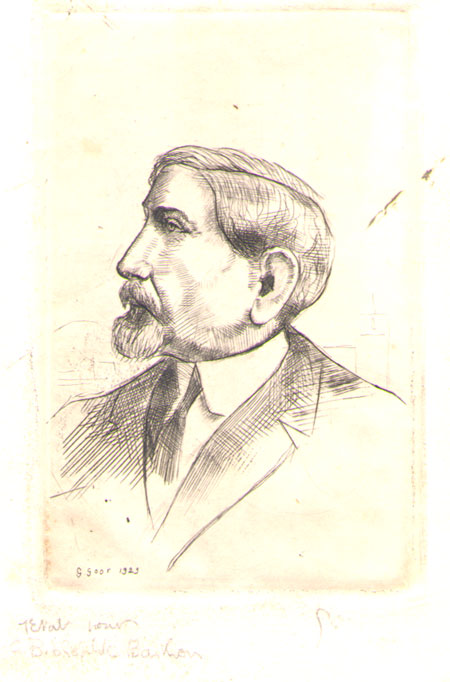
Gaston Goor (1902–1977) was a highly accomplished and controversial painter of boys. His principal patron for more than 30 years was Roger Peyrefitte. Goor illustrated many of Peyrefitte books and also made a number of works on various themes, many of which decorated the walls of Peyrefitte’s Paris apartment. Goor’s illustrations have also appeared in Montherlant’s Diarium Juvenale.
John Henry Mackay

Mackay was clear about his own sexual orientation: he was primarily attracted to boys 14 to 17 years old (as evident from his autobiographical novel Fenny Skaller, published as part of “The Books of Nameless Love”. He rejected Hirschfeld’s development of the “third sex” theory of Karl Heinrich Ulrichs and the campaign of the Scientific Humanitarian Committee, to reform German law so as to allow sexual activity between same-sex adults. Mackay’s views were closer to those of Adolf Brand regarding man-boy love.
Mackay begun writing on boylove in 1905 under the pseudonym “Sagitta”. His first boylove poems appeared in 1905 in Der Eigene edited by Adolf Brand. From 1906, the writings and theories of Mackay had a significant influence on Brand’s organisation Gemeinschaft der Eigenen and Mackay became a friend of scientist and organization’s co-founder Benedict Friedlander.
Henry de Monthelant

Although not openly gay, de Montherlant treated homosexual themes in his work, including his play La Ville dont le prince est un enfant (1952) and novel Les Garçons (The Boys), published in 1969 but written four or five decades earlier. He maintained a private correspondence with Roger Peyrefitte—author of Les Amitiés particulières (Special Friendships, 1943), also about relationships between boys at a Roman Catholic boarding school.
John Gambrill Nicholson 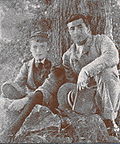
Nicholson’s semi-autobiographical novel Romance of a Choir-Boy was written between 1896 and 1905 but not published until privately printed in 1916. In it his alter egoprotagonist Philip Luard chastely pursues the unresponsive twelve-year-old Teddy Faircloth of the title, despite his friend Gerrard urging him to a more sensual approach. The novel ends with the quotation: “Physical intimacies are but surface emotions, forgotten as soon as they are satisfied; whereas spiritual intimacies live in the heart, they are part of our eternal life, and reach beyond the stars.”
Nicholson was a member of the Order of Chaeronea, a secret society for homosexuals founded in 1897 by George Ives.[8]
Tom O’Carroll
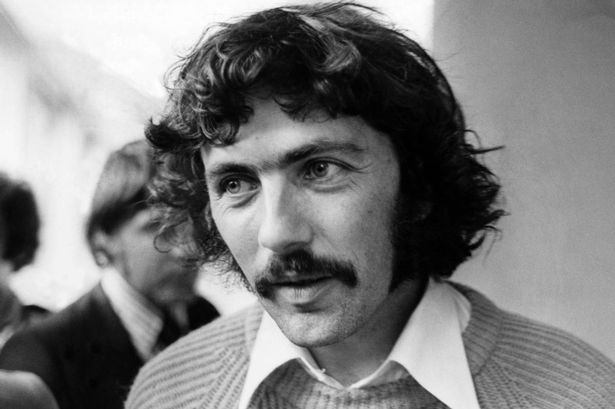
Thomas Victor O’Carroll (born 1945) is an English writer (with dual Irish/British nationality),[1] paedophilia and paederasty advocate, and a convicted distributor of child pornography.[2][3] O’Carroll is a former chairperson of the now disbanded Paedophile Information Exchange (PIE) and was at one time a prominent member of the International Paedophile and Child Emancipation (now known as Ipce).
A full documentary about Tom O’Carroll is available on YouTube.
A Decent Life: The Dissenting Narrative of Tom O’Carroll
Hajo Ortil
It was in Bremen where he founded in 1949 the Hansische Piraten Seefahrende Kanujugend Bemen e.V. (Hanseatic Pirates), a naturist group of boys and girls between the ages of 12 and 18.
Based on Bremen, Ortil accompanied the group when they put their canoes to sea for long adventurous voyages visiting solitary places from the arctic territories of Finland toGreece and shed their clothes whenever possible. Ortil encouraged both boys and girls to be open with their sexual needs. It was not uncommon for boys to masturbate in groups and play with each other during the group’s canoe trips. It was not uncommon for “Big Old Joe” (as the boys called him) to participate in the boy’s games either (Ortil never failed to show his special preference for boys), all with the tacit approval of their children’s parents, who knew about the group’s philosophy.
It is interesting to note that despite the reactionary politics in moral matters of the federal German government, the influence of the German Youth Movement and the memory of war upheaval resulted in a frankness and liberality in this regard that astonishes in retrospect.
According to Ortil’s introduction in Hundert nackte Wilde, the boys urged him to photograph them, and thus he began taking pictures of the group’s naked members regularly. These naked photographs of young boys and girls were regularly used to illustrate various issues of the naturist magazine Helios. The most famous of these was Hundert nackte Wilde (1957) (Hundred naked savages) featuring only naked boys, which caused a controversy in the neighboring Netherlands.
His photographs later appeared in Sun & Health magazine in the UK, as well as several other books, including The Boy: A Photographic Essay (1964) (presented as evidence in the 1993 Michael Jackson trial).
Hajo Ortil donated his sexological library and photographic archive to the Brongersma Foundation in the Netherlands. Nevertheless, the photographic archive was seized from the Foundation and destroyed by the Dutch police in 1999.[1]
Clarence Osborne
Clarence Osborne (1927-1979) was a boylover who may hold the world’s record of having had sexual contacts with boys — more than 2500 of them.
Osborne, was born and raised in the city of Brisbane, Australia. He worked as a professional court reporter, and then moved to the parliamentary reporting bureau. From the mid ’50s to the mid ’70s, he continuously had sexual relations with a very large number of adolescent boys (90% of them were between thirteen and twenty) in his hometown of Brisbane. Most of these were one-time sexual encounters, but some developed into full-fledged relationships which lasted for many years — well into the adulthood of the former “boy”.
Osborne recorded in great detail these sexual encounters, along with the physical characteristics of the over 2500 young males he had met and had had sexual relations (mostly intercrural intercourse or by performing fellatio on the boy). His house became a large repository of sexual information about his contacts with boys, consisting of thousands of photographs, filing cards and over 8 kilometers of tape-recordings containing conversations between himself and the boys.
In 1979, Osborne transferred part of his collection to journalist Paul Wilson fearing that the Commonwealth Police Force would soon arrest him as he was notified that the customs department had confiscated a pornographic movie which he had ordered from abroad.
Much of this information became the basis of Wilson’s book The man they called a monster (1981). The raid on Osborne’s house that ensued gave Osborne much negative publicity in the Australian press. Yet, according to the police, not one of the thousands of boys had ever complained to anyone over the two decades of Osborne’s activities, andnone came forward after Osborne’s death, even when they were reassured that they would see their files destroyed and therefore would not have to worry about the threat of blackmail. More than 25 years later police officials still note that
- “The amazing thing is that with all of these documented victims, many of them later confirmed, the police had never received any complaints on Osborne.”[1]
Osborne was never arrested, though he was “interviewed” a number of times by the police. Osborne ultimately frustrated the authorities desire to bring him to trial. He committed suicide by carbon monoxide asphyxiation in his car.
Roger Peyrefitte
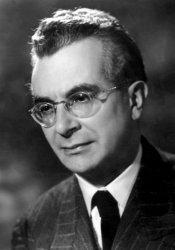
Peyrefitte is best known for his controversial novels and literary biographies. One recurring theme in his novels is pederasty. Most of his works have a pederastic undertone, and in some he freely explores that side of his own personality. Even more than André Gide or Henry de Montherlant (with whom he was friends), he used his literary career as a tool for his defence of pederasty.
The most known and probably best of these novels is the semi-autobiographical Les Amitiés particulières (1944, translated as Special friendships) which won him the Renaudot prize in 1945. The novel, based on his experiences, deals with a homoerotic relationship between two boys at a Roman Catholic boarding school and how it is destroyed by a priest’s feelings for the younger boy. However, most of the intertextuality, symbols, names of secondary characters, and also the adult characters, constantly contrast with the ‘young homosexual’ main theme, as they all relate to an ancient, modern and contemporary pederastic culture.
In 1964, the novel was made into a movie by director Jean Delannoy. On the set of the film, Peyrefitte met the 14-year-old Alain-Philippe Malagnac (later Alain-Philippe Malagnac d’Argens de Villele) who had been cast as a choir boy and was a big fan of the book. Not only did Peyrefitte sign Alain-Philippe’s copy of the book but the two also fell in love, pursuing a stormy relationship that Peyreffite chronicled in some of his later novels such as Notre Amour (1967) and L’Enfant de cœur (1978). Peyrefitte remained friends with Malagnac and he would later sell his precious collection of rare books and erotic art to finance Malagnac’s business ventures.
Peyrefitte also wrote about Baron Jacques d’Adelsward-Fersen‘s exile in Capri (L’Exilé de Capri, 1959) and translated Greek pederastic love poetry (La Muse garçonnière, 1973). Other works put him at odds with the Roman Catholic Church (Les Clés de saint Pierre, 1955) while others resulted in libel charges against him (Les Juifs, 1965, Les Américains, 1968)
Tom Reeves
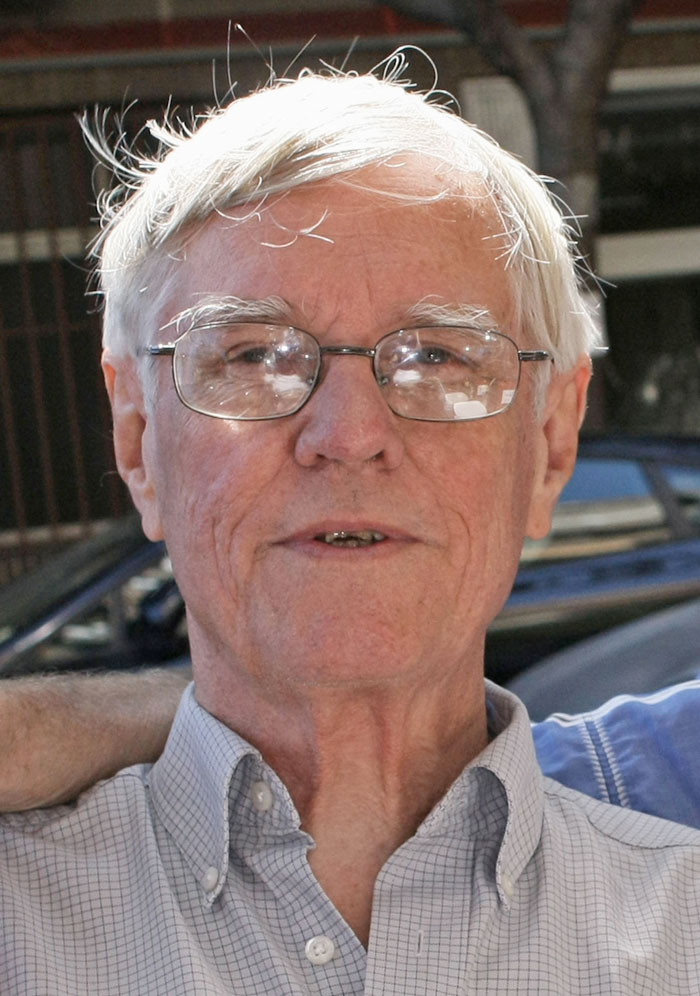
Tom Reeves was a social science professor, and one of the founding members and later a national spokesman for NAMBLA. He is also one of the original signatories on the Reform Sex Offender Laws Campaign petition. He was a hero, humanitarian, gay activist.
On December 2, 1978, Tom Reeves of the Boston-Boise Committee convened a meeting called “Man/Boy Love and the Age of Consent.” Approximately 150 people attended. At the meeting’s conclusion, about thirty men and youths decided to form an organization which they called the North American Man/Boy Love Association, or NAMBLA for short.
He is best known for the role that he played in founding NAMBLA. In the late 1970s, prior to the formation of NAMBLA, Tom Reeves was already referring to himself as a “Boylover” and publicly defending intergenerational sexual relationships. On December 2, 1978, Reeves organized a meeting on the topic of “man-boy love,”; it was at this meeting which NAMBLA was formed. Inside of NAMBLA, Reeves played a prolific role acting as a spokesman for the organization. In the late 90’s, he organized the community, Reform Sex Offender Laws. (RSOL) He was involved with many other (at that time new) gay organizations: Gay Community News, Boston Area Gay & Lesbian Youth (BAGLY), Gay & Lesbian Advocates and Defenders (GLAD), the Gay Liberation Front, and much later Act Up. He was also affiliated with the American Friends’ Service Committee
On August 23 1994, he explained that a lot of people aren’t aware of NAMBLA’s mission. “Our purpose is not to get our hands on a bunch of 14-year-old boys,” he says “The primary issue is political — to change laws about age of consent.”
Frederick William Rolfe (aka Baron Corvo)
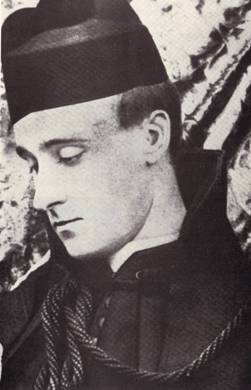
He was an open homosexual. Towards the end of his life, he made his only explicit reference to his specific sexual age preference, in one of the Venice letters to Charles Masson Fox, in which he declared: ‘My preference was for the 16, 17, 18 and large.’[3]
Kenneth Searight
Searight was a homosexual.[3] There is some reason to believe that Searight was the model for the hero of Forster’s novel Maurice.[1]
Since his school years Searight was also very fond of young boys. This was evident by a manuscript he left. Paidikion, or the book of Hyakinthos and Narkissos (ca 1917) is 570-page manuscript of semi-pornographic poetry and prose, including an 137-page (sexual) autobiography of the author in verse. In another section of the manuscript called Searight gives us a list of his affairs with 129 different boys from 1897 to 1917. The boys’ average age is around 15.
Charles Warren Stoddard
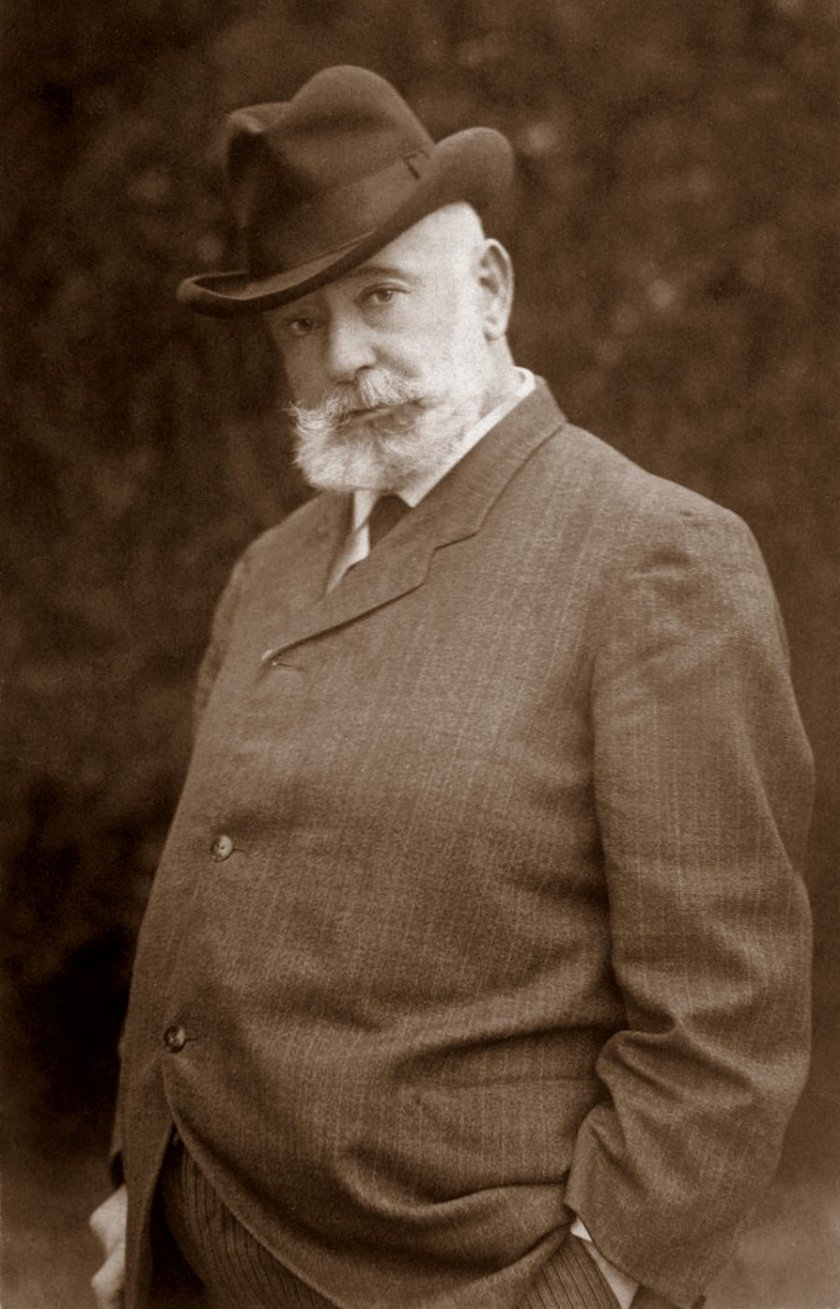
Stoddard fell in love with the painter Frank Millet during the 1870s and lived with him in Venice. But he usually favored youthful companions. Of his several “kids,” as he called them, the most important was Kenneth O’Connor, aged fifteen in 1895, when Stoddard unofficially adopted him and took him home to his Washington “Bungalow.” His experiences with Hawaiian and Tahitian youth provided the backdrop for his stories in South-sea idyls (1874, 1892) and The island of tranquil delights (1904). source
Bill Tilden

He was a very famous tennis player. Tilden was arrested in November 1946 on Sunset Boulevard by the Beverly Hills police and charged with a misdemeanor (“contributing to the delinquency of a minor”) for soliciting an under-age male, a 14-year-old boy with whom he was having sex in a moving vehicle. Tilden did not carry his glasses with him and signed a confession without reading it.[17] He was sentenced to a year in prison, but served 7½ months. His five-year parole conditions were so strict they virtually erased all his income from private lessons.[17] He was arrested again in January 1949, after picking up a 16-year-old hitchhiker who remained anonymous until years later, when he filed a lawsuit claiming he had suffered severe mental, physical, and emotional damage from the encounter. The judge sentenced Tilden to a year on probation violation and let the punishment for the charge run concurrently. Tilden served ten months. In both cases, apparently, he sincerely believed that his celebrity and his longtime friendship with Hollywood names such as Charlie Chaplin were enough to keep him from jail.[17] He therefore defended himself in court in both cases in a far less than vigorous fashion. After his incarceration, he was increasingly shunned by the tennis and Hollywood world.[17] He was unable to give lessons at most clubs, and even on public courts he had fewer clients. At one point, he was invited to play at a prestigious professional tournament being held at the Beverly Wilshire Hotel; at the last moment, he was told that he could not participate.[18] Chaplin allowed Tilden to use his private court for lessons to help him after the run of legal and financial problems.[19]
Frank Torey
In Amsterdam, Torey published from 1979 to 1984 Pan: A Magazine about Boy-Love (changed to P.A.N.-Paedo Alert News from 1982). He also edited the first anthology of boylove fiction Panthology (1981), published by John Stamford‘s Spartacus. Pan stopped running in 1981 but Stamfort employed Torey as a general editor of Coltsfoot Press, a division of Spartacus, specializing in boylove fiction. When Coltsfoot Press went bankrupt in the mid 1980s, Torey founded his own publishing house, the Acolyte Press, the most important publisher of boylove fiction and erotic for a decade. Torey was also an author and published many of his short stories under the pen names Peter Zupp, Scott Altman, Wallington Fuger and Jotham Lotring.
Apart from publishing fiction, Torey was interested in the scholarly work on boylove which was becoming important in the 1980s. He translated many scholarly books and articles from Dutch to English including Theo Sandfort‘s The Sexual Aspects of Pedophile Relations (1982) and set up an additional publishing house, Global Academic Publishers, which published scholarly works such as Edward Brongersma‘s two-volume Loving Boys (1987) and Theo Sandfort‘s Boys on their Contacts with Men (1987). In addition, he served in the editorial board of Paidika: The Journal of Paedophilia (1987-1995).
Edward Perry Warren
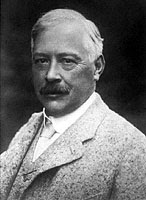
His published works include A Defence of Uranian Love in three volumes, which proposes a type of same-sex relationship similar to that prevalent in Classical Greece, in which an older man would act as guide and lover to a younger man.
Robert M. Wren

Under the pen name Robert Campbell, Wren wrote boylove fiction. Many of his short stories appeared in the collection Singularities (1989) as well as several anthologies published by the Acolyte Press. Several published and unpublished manuscripts of his stories can be found at the archives of Harry Ransom Humanities Research Center, University of Texas at Austin.
Wren was particularly fond of boys and tennis and sponsored several young Nigerian tennis players from secondary school through college. He also served on the editorial board of the Journal of Homosexuality and in the late 1980s in the NAMBLA steering committee.
Frits Bernard
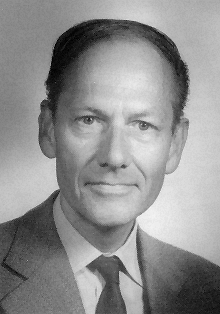
Beginning in 1940, and building upon the remnants of the Dutch branch of the Scientific-Humanitarian Comittee Bernard begun organizing the Enclave Kring, the first organization for pedophiles. In 1960 Enclave moved to Rotterdam. It later developed into the “International Enclave Movement” where people from various countries joined. Its objectives were to:
- “to break down prejudice about the issues of erotic contacts and relationships between minors and adults […] to provide information and advice as well as to initiate a direct assistance program [and makes steps] toward a revision of the penal code.”
Sebastian Bleisch
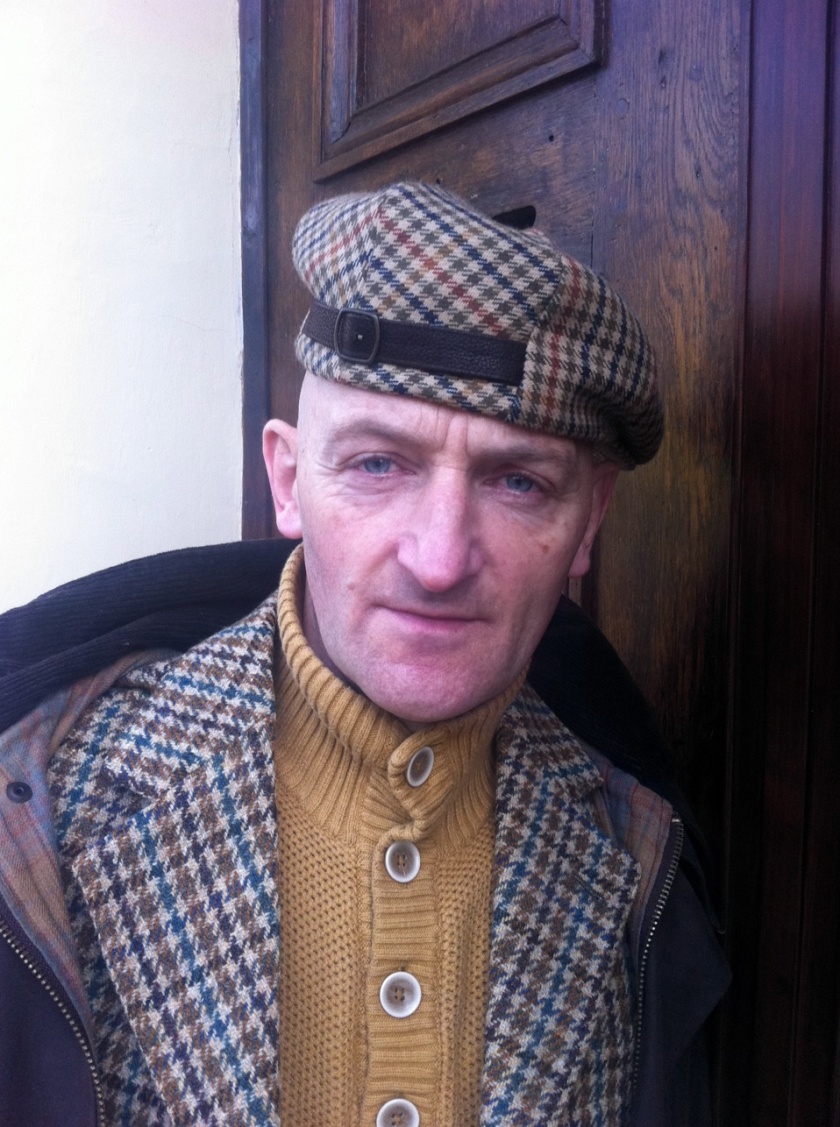
Bleisch’s filming career came to an abrupt halt when he was arrested on September 16, 1996 during the filming of five boys being intimate in a hangar in Ludwigslust. Some of the parents of Bleisch’s models had become suspicious about their sons’ activities with the director and the police had initiated a criminal investigation. On May 20, 1997 Sebastian Bleisch was sentenced to two and a half years detention by the regional court in Schwerin for having used adolescents who were still under 16 years old in the 60 or sopornographic films he had directed since 1990. He evaded conviction on more serious charges, however, after the defence showed that the boys had approached Bleisch willingly and no psychological harm had occurred. While Bleisch served his sentence in the Bützow Penal Institution he wrote a trilogy of novels for which a publisher has not yet been found.[3]
Bernard also became active, in the late 1950s, in COC (Netherlands Association for the Integration of Homosexuality) and contributed articles in its magazine, Vriendschap using the pseudonym “Victor Servatius”. In the early 1970s he became active in the Dutch Society for Sexual Reform and was instrumental in establishing the pedophile work groups within the organization. He was also one of the editors of Sex met kinderen (1972), the first attempt in the Netherlands for a public discussion of pedophilia.
Bernard wrote for a great number of magazines set up by boylovers and pedophiles like NIKS (organ of the NVSH pedophile work groups), Magpie, Pan: A Magazine about Boy-Love, O.K., Koinos, Le petit gredin, L’espoir and others.
Michael F. Melsheimer

Michael F. Melsheimer (August 21, 1942 – July 15, 2010) was a boylove activist who co-founded the organization B4U-ACT The goal of B4U-ACT is to make effective, compassionate mental health services available to this population, while challenging negative cultural assumptions which frequently serve as barriers to treatment, thus increasing the likelihood of minor-attracted people leading productive, meaningful lives.
Roderik Muit

Roderik Muit (b. April 27, 1974) is a successful IT professional from the Netherlands, known for his work in defence of free speech on the internet, and voluntary self-identification as a minor-attracted person (Boylover). In addition to having worked in the IT departments of a number of large companies, Muit has for a long time sought to provide affordable webspace to other persons who seek to publish unpopular ideas. This not-for-profit work has enabled a number of websites which discuss pedophilia openly to exist for far longer than they would have under mainstream hosting arrangements. Muit is also one of the administrators behind the Dutch website pedofilie.nl, a forum for the open discussion of pedophilia. He cites the positive effects of catharsis for minor-attracted people as one of the reasons he continues to provide assistance to websites that discuss pedophilia.[1]
David L. Riegel
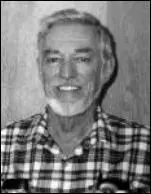
David L. Riegel (b. 1931) is an independent writer and researcher on the topic of sexually expressed boy/older male relationships. After already having retired twice from dissimilar fields, in 1999 he was recruited by a McGraw Hill textbook editor to submit an essay on the Rind controversy. This was accepted by the editor but withheld from publication by the management until 2005. In 2000, he published the first of his four paperback books.
In cooperation with several others, and over an eight year period on the now defunct web board SafeHaven, a Philosophy of Responsible Boylove[1] was developed, which is hosted by the SafeHaven Foundation.[2] Another innovation is Peer Support Exchange[3], and further information is available on his personal website.[4]
July 1, 1998, Riegel created IBLD.net[5] a site which is dedicated to International Boylove Day and is the longest running site devoted to its observance.
Robin Sharpe
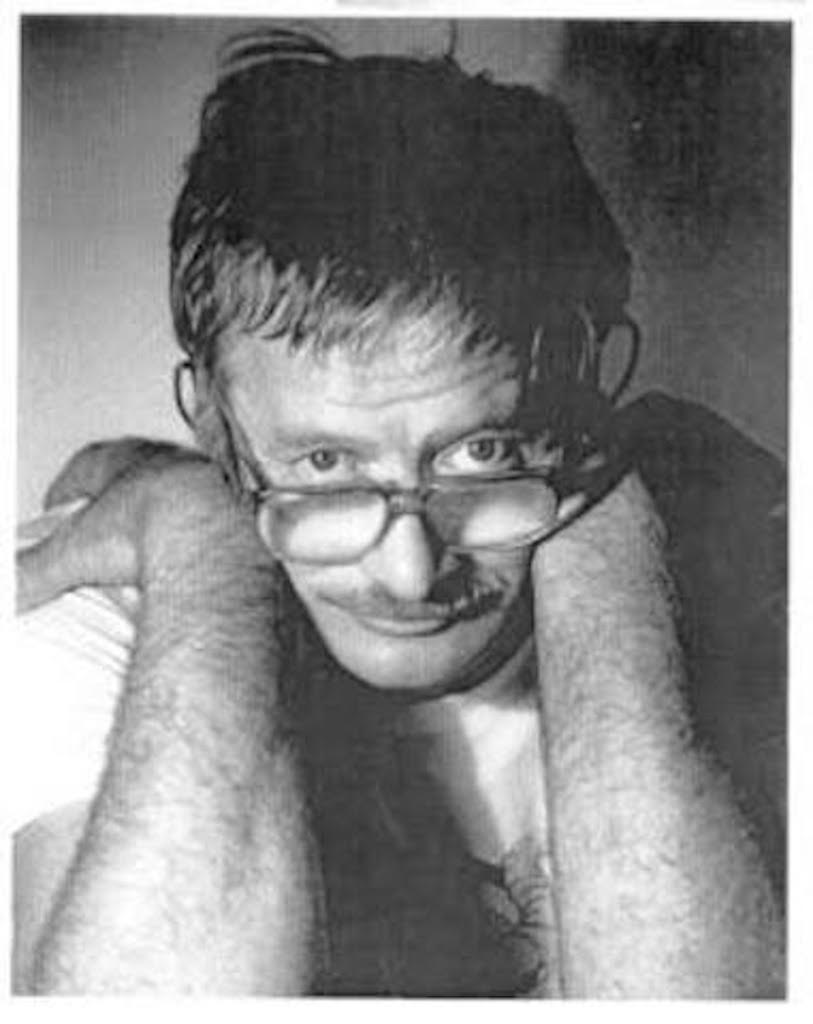
John Robin Sharpe (ca. 1933- 2015 ) is a Canadian writer, world traveler and boylover. Sharpe is particularly noted for successfully challenging several portions of Canada‘schild pornography laws. He was also the first Canadian citizen to mount a successful constitutional challenge without legal representation.
Sharpe was arrested and charged with two counts of possessing child pornography and two counts of distributing child pornography in 1995 after police raided his apartment and found photographs of adolescents involved in sexual activity and journals and manuscripts depicting fictitious adolescents engaged in sexual activity. In January 1999, he was acquitted of the charge of possession of child pornography by the British Columbia Supreme Court and, in May 1999, the British Columbia Court of Appeal upheld the ruling by a 2-1 vote. The Court of Appeal stated that current child pornography laws “[are] truly one step removed from criminalizing simply having objectionable thoughts.” Shortly thereafter, British Columbia appealed to the Supreme Court of Canada which, in the landmark ruling of R. v. Sharpe in January 2001, upheld most of the child pornography law but said that people can’t be prosecuted for creating works of their own imagination for their own use.
The case went back to the British Columbia Supreme Court which ruled in March 2002 that Sharpe was not guilty of possession of child pornography related to his sexually-explicit writings but was guilty of two counts of possession of pornographic pictures of children. He was sentenced to four months of house arrest. British Columbia Supreme Court Judge Duncan Shaw condemned Sharpe’s writings as “morally repugnant” but defended them as within Sharpe’s legal rights because they “[did] not actively advocate or counsel the reader to engage in the acts described” and had “artistic merit”. The ruling angered many family and child advocacy groups who claimed the “artistic merit” defense would open the door to wide-spread distribution of child pornography and limit the abilities of police forces to crack down on actual child exploitation, therefore placing children at risk.
Later in 2002, Sharpe was arrested again on the charges of gross indecency and indecent assault stemming from abuses which took place from 1979 to 1982. Pictures of the sexually abused teenager, who was aged 11 through 14 during the assaults, were among the over 500 for which he had been previously charged. In 2004, Sharpe was found guilty of indecent assault and sentenced to two years in prison, which he has promised to appeal. He has maintained that the boy was never harmed and wanted to have sex. During the trial, the victim said, “I like Robin, but if somebody did that to my kids, I’d want to kill him.”
David Thorstad

David Thorstad (born June 6, 1941)[1] is an American political activist engaged with pro-pederast and pro-pedophile activism within the North American Man/Boy Love Association (commonly known as NAMBLA), of which he was a founding member. He was also a former president of New York’s Gay Activists Alliance.[2]
Thorstad describes himself as a bisexual pederast and atheist (former Pentecostal) who has “never been charged with violating any sex laws”.[3]

